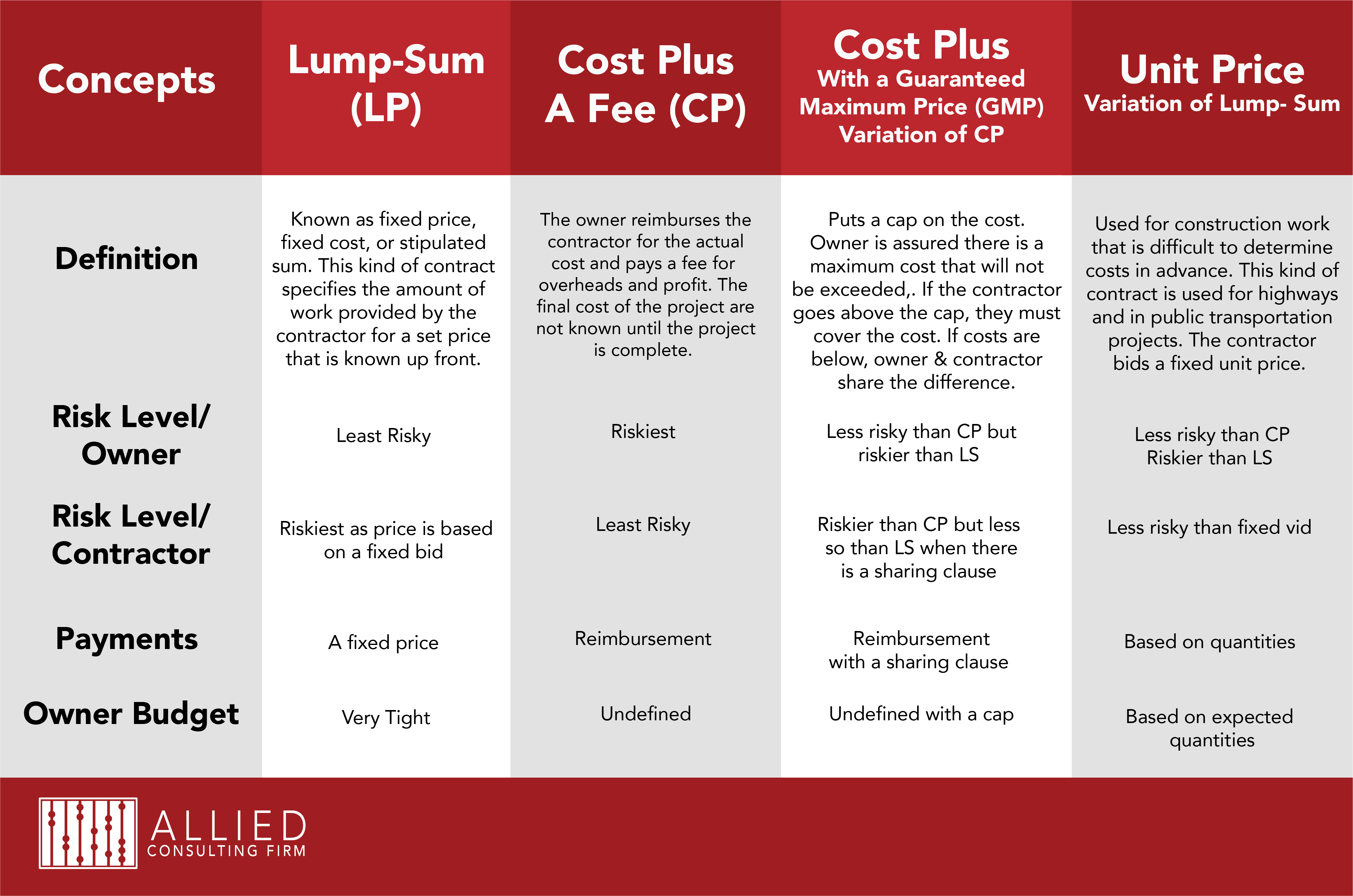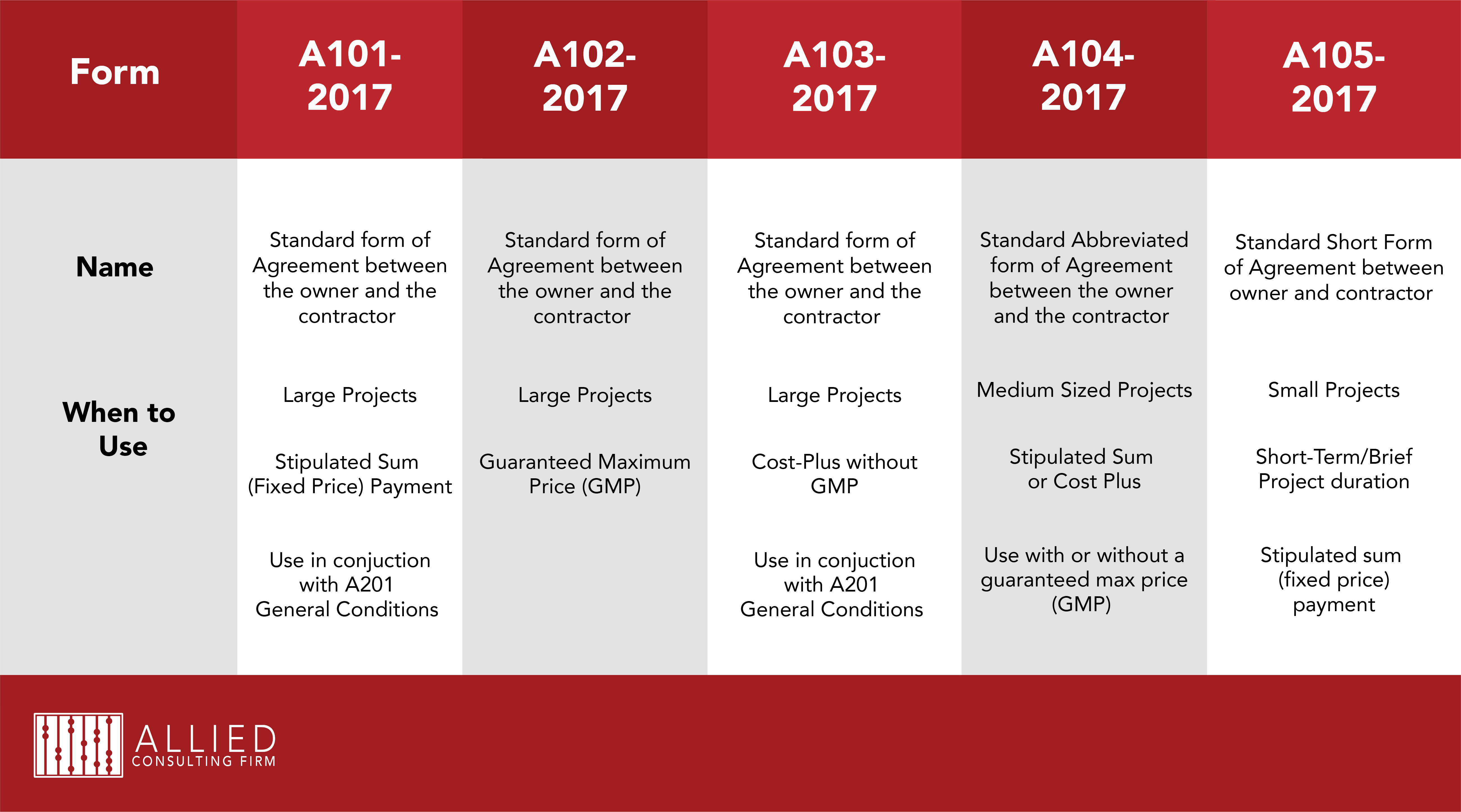Construction Contracts Overview
Ways to bill a project.
When is time to select what kind the contract to choose you must keep in mind two things:
• How the contractor gets paid
• How financial risk is distributed between the owner and the contractor
There are many ways to craft a construction contract, but there are four types of contracts commonly used in the construction industry (See the chart below). These types are based on either a fixed-cost; where the contractor is paid according to the estimate or reimbursable-cost, where the contractor is paid for actual costs incurred.
Types of Contracts:

Standardized construction contracts and forms that establish the agreement between:
OWNER -> ARCHITECT
OWNER -> CONTRACTOR
These contracts and forms can be found on The American Institute of Architects website.
The ones that are the topic of this blog are below.

See more details and other forms at https://www.aiacontracts.org
There are different ways to bill a construction project however, this depends on the size of the project, its complexity, and the time frame in which the project needs to be completed. If the project is small and can be done in a short period of time you can bill it at the end of the project, or ask for 40 or 50% up-front, and bill the rest at its completion.
But if the project is more complex and will be completed in a long-term time frame you should bill as you go along. That means to bill the project based on “Percentage of completion” and ask for progress payments which result in progressive billing.
Another difference regardless of the project size, length, or complexity is based on the kind of contract you choose. In the case of Lump-Sum or Unit Price, you do not need to submit any back-up documentation with your bill. This kind is simple, you just ask for the deposit if it applies or submit the percentage of completion on the day you close the bill. Usually, in a percentage of completion, the bill is monthly.
On the other hand, a Cost-Plus contract demands too much paperwork because you need to justify each payment with documentation (receipts, suppliers’ invoices, subcontractors’ invoices, etc.) of the work completed during the billing period regardless of the size or the project.
A progress billing is based on the project’s Schedule of Value (SOV), which line by line specifies the phases of the project; in which you will assign the percentage of completion for each item at the cut of the day of your progress bill. To submit a progress bill, you will need to use the G702-1992 Application for Payment, and the G703-1992 Continuation Sheet in AIA version or one similar, which could be found on AIA website as well.
Keep in mind that using Cost-Plus A Fee (CPF) contracts and their variations demand more level of control and organization of the paperwork which must be submitted as a backup of the bill. This type of contract is riskier for the owner. On the contrary, a Lump-Sum contract and its variations are easy to manage at a billing level but is riskier for the Contractor.

Leave A Comment